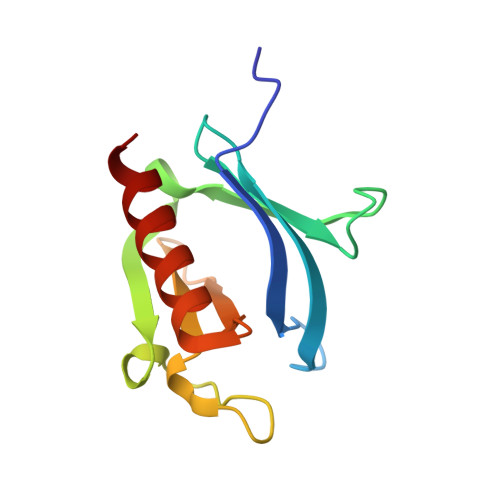Intracellular phosphatidylserine is essential for retrograde membrane traffic through endosomes
Uchida, Y., Hasegawa, J., Chinnapen, D., Inoue, T., Okazaki, S., Kato, R., Wakatsuki, S., Misaki, R., Koike, M., Uchiyama, Y., Iemura, S., Natsume, T., Kuwahara, R., Nakagawa, T., Nishikawa, K., Mukai, K., Miyoshi, E., Taniguchi, N., Sheff, D., Lencer, W.I., Taguchi, T., Arai, H.(2011) Proc Natl Acad Sci U S A 108: 15846-15851
- PubMed: 21911378
- DOI: https://doi.org/10.1073/pnas.1109101108
- Primary Citation of Related Structures:
3AJ4 - PubMed Abstract:
Phosphatidylserine (PS) is a relatively minor constituent of biological membranes. Despite its low abundance, PS in the plasma membrane (PM) plays key roles in various phenomena such as the coagulation cascade, clearance of apoptotic cells, and recruitment of signaling molecules. PS also localizes in endocytic organelles, but how this relates to its cellular functions remains unknown. Here we report that PS is essential for retrograde membrane traffic at recycling endosomes (REs). PS was most concentrated in REs among intracellular organelles, and evectin-2 (evt-2), a protein of previously unknown function, was targeted to REs by the binding of its pleckstrin homology (PH) domain to PS. X-ray analysis supported the specificity of the binding of PS to the PH domain. Depletion of evt-2 or masking of intracellular PS suppressed membrane traffic from REs to the Golgi. These findings uncover the molecular basis that controls the RE-to-Golgi transport and identify a unique PH domain that specifically recognizes PS but not polyphosphoinositides.
- Department of Health Chemistry, Graduate School of Pharmaceutical Sciences, University of Tokyo, Tokyo 113-0033, Japan.
Organizational Affiliation:


















